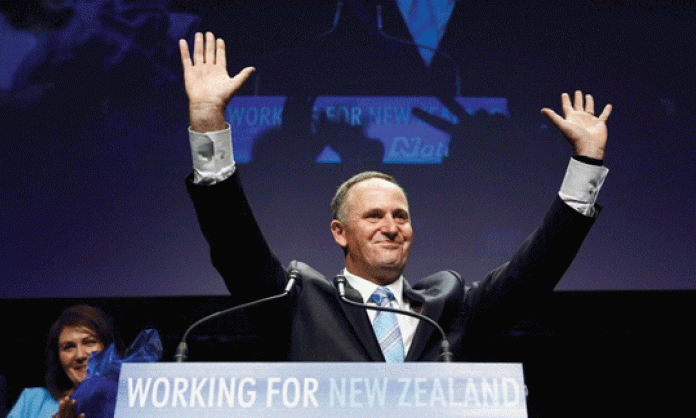The conservative National Party’s 20 September New Zealand (Aotearoa) election victory was a defeat for workers and the left. National won 48 percent of the vote, an increase compared to the last election. In the weeks following the results, National has outlined plans for the coming years: anti-union laws and charter schools.
So we must begin with a lucid registration of defeat: with each election, National has maintained or increased its support. Unlike the last time it was in government, the party is not attempting a major reform of New Zealand capitalism. It is instead making do with a mixture of cronyism, dairy industry promotion, increasing exports to China and rebuilding following the Christchurch earthquake. This partly explains prime minister John Key’s anti-political, “everyman” image, and its success. He remains a popular public figure.
A record level of non-participation in the last two elections is the other aspect to the situation. A concerted trade union campaign to increase voter participation made little difference. A significant section of the population is disengaged almost entirely from political life. This goes some way towards explaining why Key remains popular despite there being inequality and poverty throughout the country.
Labour’s crisis
Labour’s result is its worst since the 1920s. New Zealand has a proportional representation system much like Germany’s, so the seats Labour “won” conceal a more thorough defeat. Even leading MPs managed to pull fewer party votes than National in a host of safe seats. After a lacklustre and unenthusiastic campaign, Labour puttered into nowhere.
Two lessons stand out. One is that the Maori and Pasifika industrial working class continue to be Labour’s solid support. Labour topped the poll for party votes in all of the Maori seats. Labour held South Auckland, the heartland of Pasifika New Zealand.
The other lesson is that this will not be what mainstream and respectable opinion chooses to stress. Already a fight is on to punish Labour leader David Cunliffe for making a half-turn towards the left. A leadership contest is under way, and the media establishment have united against Cunliffe. The parliamentary party – which is to the right of the membership – and the capitalist class are fighting to push the party to the right.
What of the Greens? Being kept from government again spares them the test of power. But their contradictions develop. A pattern from the last election repeated itself, with the Greens doing well in wealthy areas and slipping in poorer (and brown-skinned) areas. The party campaigned around inequality and child poverty, but not with or to those affected by this situation. Shedding, with each election, their association with the historical left, the Greens face an uncertain future.
Taking 10 percent of the vote, a small drop from the last election, and after months of hoping for much more, the Greens may be reaching an electoral plateau, the fate of so many Green parties internationally. One in 10 votes may be the scope of socially liberal affluence.
The rout of Internet Mana
The Greens’ disappointments are nothing to the defeat of Internet Mana. Internet Mana was an alliance between the progressive and left wing Maori nationalist Mana Party and internet millionaire Kim Dotcom’s Internet Party. Mana, struggling for years with no real presence outside of the Maori world, hoped the alliance would pull it out of the political margins.
The gamble failed, with Mana losing its sole MP – the veteran protester and activist Hone Harawira, a principled fighter – and gaining little support in the process. In fact, the party suffered almost total marginalisation.
What next?
National and Key continue in a position of astonishing strength. Our side remains in disarray, with our unions weak, social movements demoralised and the parties and organisations of the extra-parliamentary left smaller than they have been in generations.
Yet nothing is inevitable or eternal. In 2004, after Liberal prime minister John Howard won a fourth term in Australia, it seemed as if the conservatives were invincible. Some columnists wrote about moving to New Zealand, such was their demoralisation. Three years later his government was defeated and Howard had lost his seat, broken by opposition to his industrial relations attacks.
In New Zealand, the divisions between the wealthy and the poor will continue, and probably widen, in coming years. Class struggle will continue to be waged by their side. How will ours respond?










